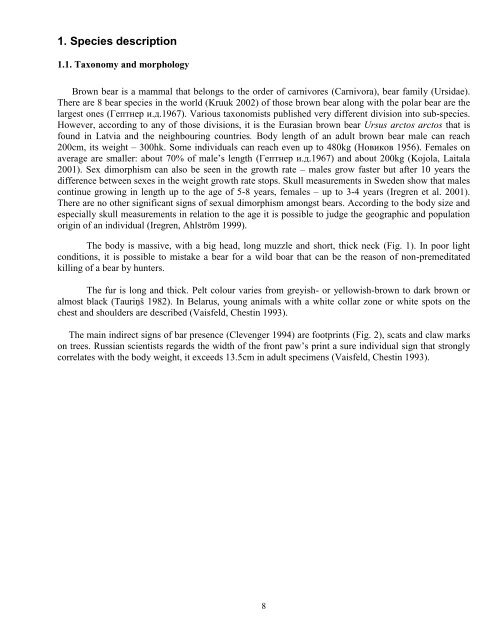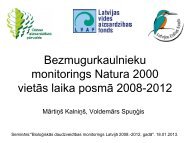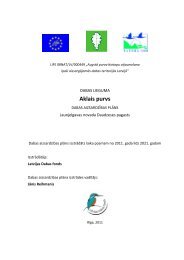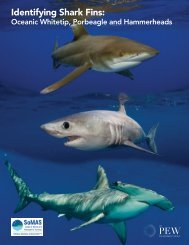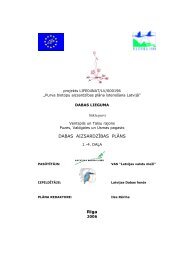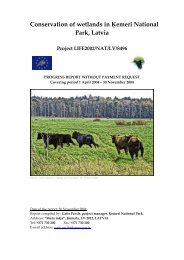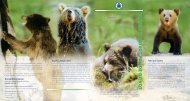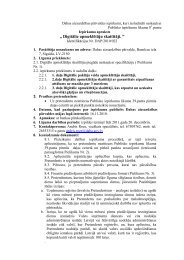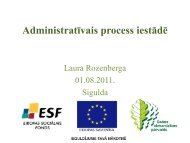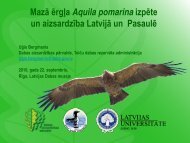Brown bear Ursus arctos - Dabas aizsardzības pārvalde
Brown bear Ursus arctos - Dabas aizsardzības pārvalde
Brown bear Ursus arctos - Dabas aizsardzības pārvalde
Create successful ePaper yourself
Turn your PDF publications into a flip-book with our unique Google optimized e-Paper software.
1. Species description<br />
1.1. Taxonomy and morphology<br />
<strong>Brown</strong> <strong>bear</strong> is a mammal that belongs to the order of carnivores (Carnivora), <strong>bear</strong> family (Ursidae).<br />
There are 8 <strong>bear</strong> species in the world (Kruuk 2002) of those brown <strong>bear</strong> along with the polar <strong>bear</strong> are the<br />
largest ones (Гептнер и.д.1967). Various taxonomists published very different division into sub-species.<br />
However, according to any of those divisions, it is the Eurasian brown <strong>bear</strong> <strong>Ursus</strong> <strong>arctos</strong> <strong>arctos</strong> that is<br />
found in Latvia and the neighbouring countries. Body length of an adult brown <strong>bear</strong> male can reach<br />
200cm, its weight – 300hk. Some individuals can reach even up to 480kg (Новиков 1956). Females on<br />
average are smaller: about 70% of male’s length (Гептнер и.д.1967) and about 200kg (Kojola, Laitala<br />
2001). Sex dimorphism can also be seen in the growth rate – males grow faster but after 10 years the<br />
difference between sexes in the weight growth rate stops. Skull measurements in Sweden show that males<br />
continue growing in length up to the age of 5-8 years, females – up to 3-4 years (Iregren et al. 2001).<br />
There are no other significant signs of sexual dimorphism amongst <strong>bear</strong>s. According to the body size and<br />
especially skull measurements in relation to the age it is possible to judge the geographic and population<br />
origin of an individual (Iregren, Ahlström 1999).<br />
The body is massive, with a big head, long muzzle and short, thick neck (Fig. 1). In poor light<br />
conditions, it is possible to mistake a <strong>bear</strong> for a wild boar that can be the reason of non-premeditated<br />
killing of a <strong>bear</strong> by hunters.<br />
The fur is long and thick. Pelt colour varies from greyish- or yellowish-brown to dark brown or<br />
almost black (Tauriņš 1982). In Belarus, young animals with a white collar zone or white spots on the<br />
chest and shoulders are described (Vaisfeld, Chestin 1993).<br />
The main indirect signs of bar presence (Clevenger 1994) are footprints (Fig. 2), scats and claw marks<br />
on trees. Russian scientists regards the width of the front paw’s print a sure individual sign that strongly<br />
correlates with the body weight, it exceeds 13.5cm in adult specimens (Vaisfeld, Chestin 1993).<br />
8


